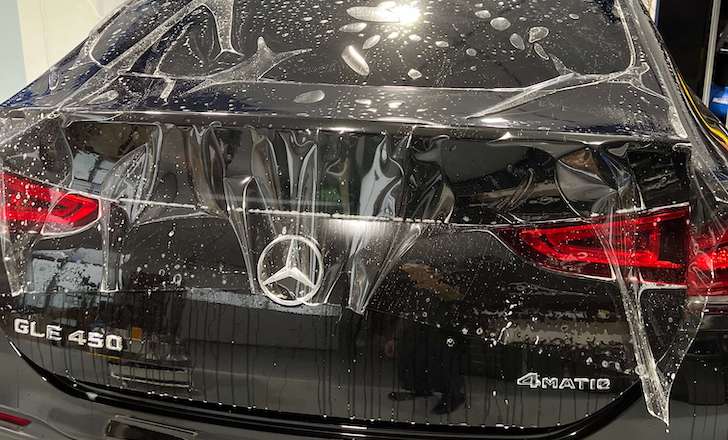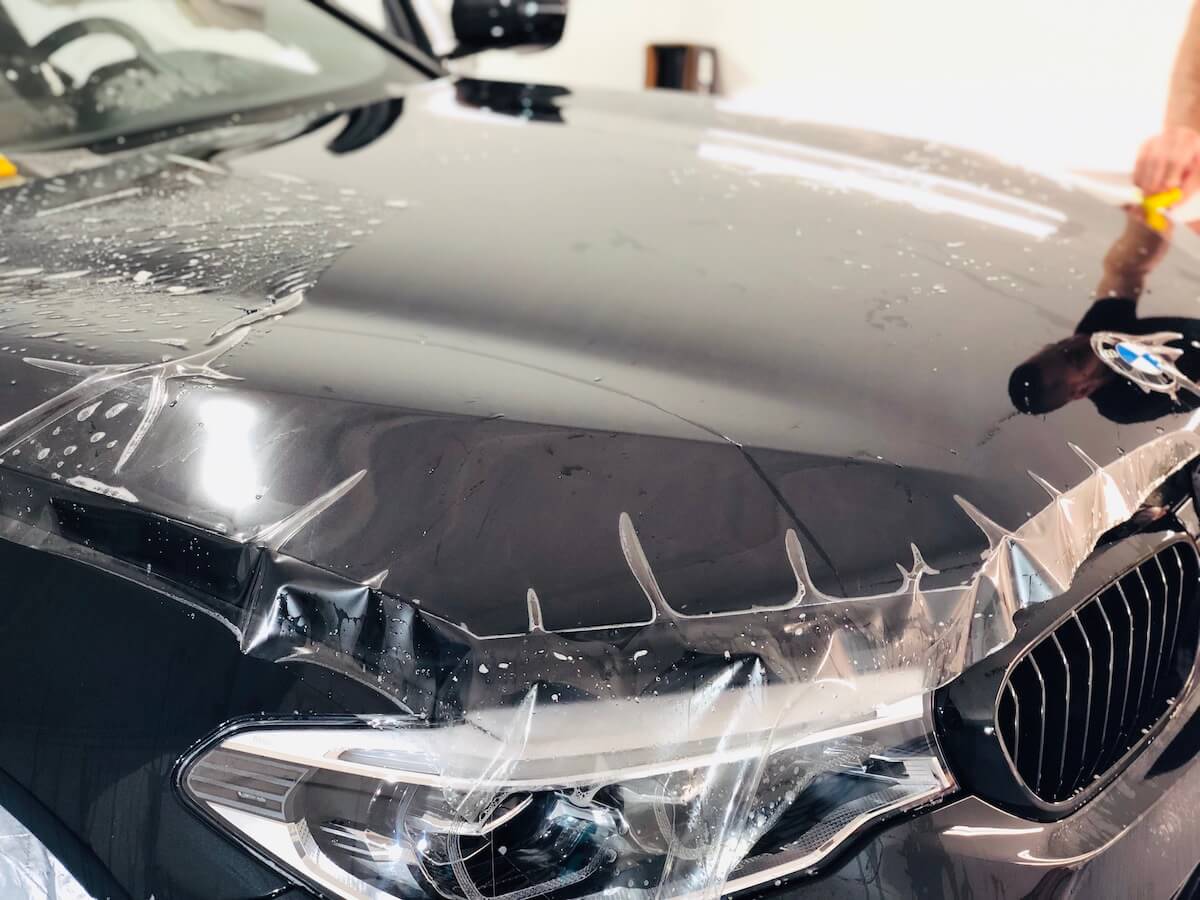All You Need to Know About PPF: Composition, Molecular Structure, and Manufacturing
You’ve probably heard about paint protection film (PPF) and how it’s used to safeguard surfaces from damage. But have you ever wondered what PPF is made of, or how it’s manufactured? Sit back, grab a cup of coffee, and let’s dive into the fascinating world of PPF – its composition, molecular structure, and manufacturing process.

Understanding PPF: Composition, Molecular Structure, and Manufacturing
PPF Composition
Polymer-Based Material
PPF is primarily composed of a transparent, multi-layered, and flexible polymer-based material. Let’s break that down a bit:
Monomers and Polymers
The backbone of PPF is a series of monomers that have bonded together to form long chains known as polymers. These polymers provide the necessary strength, durability, and flexibility for PPF to protect surfaces effectively.
Polymerization Process
The polymers in PPF are created through a process called polymerization, where the monomers chemically react and form strong bonds with each other.
Molecular Weight and Density
PPF’s performance is greatly influenced by the molecular weight and density of the polymers. Higher molecular weight and density result in a more robust and durable film.
Adhesive Layer
A crucial component of PPF is its adhesive layer, which allows the film to stick to the surface it’s protecting. This layer plays a significant role in the performance of PPF.
Types of Adhesives
Different types of adhesives are used in PPF, such as acrylic and silicone-based adhesives. Each type has its pros and cons and affects the film’s overall performance.
Adhesion Properties
The adhesive layer determines the ease of installation, durability, and clarity of PPF. It’s essential to strike the right balance between adhesion strength and removability to provide optimal protection without damaging the underlying surface.
Impact on Performance
The adhesive layer plays a crucial role in the overall performance of PPF. A high-quality adhesive ensures a strong bond, reduced yellowing, and long-lasting protection.
Molecular Structure
Chemical Structure
The chemical structure of PPF is a critical factor in determining its properties and performance.
Chemical Bonds
The types of chemical bonds within the polymers influence the film’s elasticity, toughness, and resistance to wear and tear.
Chain Arrangement
The arrangement of the polymer chains in PPF influences its mechanical properties, such as flexibility and tensile strength.
Steric Effects
Steric effects within the polymer chains can impact the film’s clarity, adhesion properties, and resistance to chemicals and UV radiation.
Crystal Structure
PPF’s crystal structure is another important aspect that affects its properties.
Crystalline vs. Amorphous
PPF can have a crystalline or amorphous structure, which impacts its optical clarity, mechanical properties, and resistance to heat and chemicals.
Crystallization Process
The crystallization process during PPF production can influence the film’s performance, durability, and appearance.
Effect on Mechanical Properties
The crystal structure of PPF affects its mechanical properties, such as tensile strength, elongation, and abrasion resistance.

Manufacturing
Production Methods
PPF can be manufactured using various production methods, each with its advantages and disadvantages.
Cast vs. Extruded
PPF can be made using either cast or extruded processes. Cast films are typically thinner and more flexible, while extruded films are thicker and more rigid.
Coating and Lamination
Coating and lamination processes are employed to add the adhesive layer and other functional layers to the PPF.
Quality Control
Quality control is essential during PPF manufacturing
to ensure a consistent and reliable product. Manufacturers must perform tests and inspections at various stages of the production process to guarantee the film’s performance, durability, and appearance.
Applications
PPF has a wide range of applications across various industries, thanks to its versatile properties and protective capabilities.
Automotive Industry
One of the most common uses of PPF is in the automotive industry, where it’s applied to vehicles’ exterior surfaces to protect the paint from chips, scratches, and environmental damage. PPF is particularly popular among luxury and performance car owners, who value their vehicles’ aesthetics and want to maintain their pristine appearance.
Electronic Industry
PPF is also utilized in the electronic industry to protect screens and surfaces of devices like smartphones, tablets, and laptops from scratches and damage. Its thin, flexible nature allows it to conform to the contours of various electronic devices without impacting their functionality or appearance.
Construction Industry
PPF has found applications in the construction industry as well, where it’s used to protect glass surfaces, stainless steel, and other materials from scratches, graffiti, and general wear and tear. This helps maintain a clean and polished appearance for buildings and other structures.
In conclusion, understanding the composition, molecular structure, and manufacturing process of PPF gives us a greater appreciation for its capabilities as a protective material. With its wide range of applications and impressive performance, PPF has become a popular choice for safeguarding surfaces in various industries.
If you found this article insightful, feel free to share it with your friends or leave a comment below. Don’t forget to subscribe to our newsletter for more fascinating articles about automotive and material technologies!
As we continue to explore the world of PPF, let’s delve into some additional aspects that contribute to its growing popularity and success in various industries.
Customization and Installation
One of the appealing factors of PPF is its adaptability and customization options. PPF can be cut and shaped to fit virtually any surface, ensuring a perfect fit for the intended application.
Professional PPF installers use specialized tools and techniques to apply the film seamlessly, ensuring a flawless appearance without any wrinkles or bubbles. The installation process can be time-consuming, but the results are well worth the effort.
Maintenance and Durability
PPF is designed to be low-maintenance, making it a convenient solution for busy individuals and businesses. Regular cleaning with mild soap and water is generally all that’s required to keep the film looking its best.
PPF is also known for its impressive durability, with high-quality films lasting up to 10 years or more when properly maintained. This longevity means that surfaces protected by PPF will remain in excellent condition for an extended period, saving owners from costly repairs or replacements.
Cost-Effectiveness
While the initial investment in PPF might seem expensive, the long-term benefits often outweigh the costs. By protecting surfaces from damage, PPF can help maintain a vehicle’s resale value, prolong the lifespan of electronic devices, and reduce maintenance costs for buildings and other structures.
Considering the potential savings in repairs and replacements, PPF is a cost-effective solution for many industries and applications.

Future Developments
As technology and materials science continue to advance, we can expect further improvements in PPF’s performance and capabilities. Researchers are continually working on developing new formulations and manufacturing techniques to enhance PPF’s properties, such as increased UV resistance, self-healing capabilities, and even more effective adhesion.
The future of PPF is undoubtedly bright, and we look forward to seeing how this remarkable material continues to evolve and impact various industries.
We hope you enjoyed learning about PPF’s composition, molecular structure, manufacturing, and applications. If you’d like to stay informed about the latest developments in PPF and other automotive and material technologies, be sure to subscribe to our newsletter and share this article with your friends! And, as always, we’d love to hear your thoughts and experiences with PPF in the comments section below.
Environmental Impact and Sustainability
As we become more aware of our environmental footprint, it’s essential to consider the ecological impact of materials like PPF. The good news is that PPF manufacturers are taking steps to minimize their environmental impact and improve the sustainability of their products.
Recycling and Waste Reduction
Many PPF manufacturers have implemented recycling programs and waste reduction strategies during the production process. By recycling waste materials and utilizing more efficient manufacturing techniques, these companies are working to minimize their environmental impact and create a more sustainable product.
Eco-Friendly Materials
Some PPF manufacturers have started to explore the use of eco-friendly materials in their products, such as bio-based polymers or recycled materials. These innovations aim to reduce the reliance on non-renewable resources and lessen the environmental footprint of PPF production.
Innovations in PPF Technologies
The world of PPF is constantly evolving, with new and exciting innovations emerging regularly. Some of the latest advancements in PPF technology include:
Self-Healing Properties
Some modern PPF products boast self-healing capabilities, where minor scratches and blemishes can “heal” themselves when exposed to heat. This innovative feature helps maintain the pristine appearance of the protected surface and prolongs the film’s lifespan.
Enhanced UV Protection
Advanced PPF formulations offer improved UV protection, reducing the risk of paint fading and other sun-related damage. This enhanced UV resistance is particularly beneficial for vehicles and structures exposed to harsh sunlight for extended periods.
Ceramic Coatings
Some PPF manufacturers have begun incorporating ceramic coatings into their products, providing an extra layer of protection against scratches, chemical damage, and water spotting. Ceramic coatings also offer a high-gloss finish, enhancing the appearance of the protected surface.
As PPF technology continues to advance, we can expect even more innovative features and capabilities in the future, making it an even more valuable material for protecting surfaces across various industries.
We hope this deep dive into the world of PPF has given you a greater understanding of its composition, molecular structure, manufacturing process, and applications. If you’d like to stay updated on the latest developments in PPF and other automotive and material technologies, don’t forget to subscribe to our newsletter and share this article with your friends! We’d also love to hear your thoughts and experiences with PPF, so feel free to leave a comment below.
Choosing the Right PPF for Your Needs
With so many PPF products available on the market, it can be challenging to determine which one is the best fit for your specific needs. Here are some factors to consider when choosing a PPF for your application:
Intended Use
Consider the primary purpose of the PPF and the type of protection you need. For example, if you’re looking for a PPF for your vehicle, you may want a product with self-healing properties and enhanced UV protection. For electronic devices, you may prioritize a thinner film that doesn’t impact the device’s functionality.
Quality and Brand Reputation
Research various PPF brands and their reputation in the industry. Look for reviews and testimonials from customers who have used their products to gauge the quality and performance of their films. Reputable brands with a history of producing high-quality PPFs are more likely to deliver a reliable and long-lasting product.
Warranty
A good warranty can provide peace of mind, ensuring that you’re covered in case the PPF doesn’t perform as expected. Look for PPF products that come with a robust warranty, covering aspects such as yellowing, cracking, or peeling.
Professional Installation
While it’s possible to install PPF yourself, professional installation is generally recommended for the best results. A skilled installer has the necessary tools, knowledge, and experience to ensure a flawless application that maximizes the PPF’s performance and longevity. When choosing a PPF, make sure to factor in the cost of professional installation.
By considering these factors and doing thorough research, you can find the perfect PPF product for your needs, ensuring your surfaces remain protected and well-maintained for years to come.
We hope this comprehensive guide to PPF has provided you with valuable insights into its composition, molecular structure, manufacturing process, applications, and more. If you’d like to stay informed about the latest developments in PPF and other automotive and material technologies, be sure to subscribe to our newsletter and share this article with your friends!
